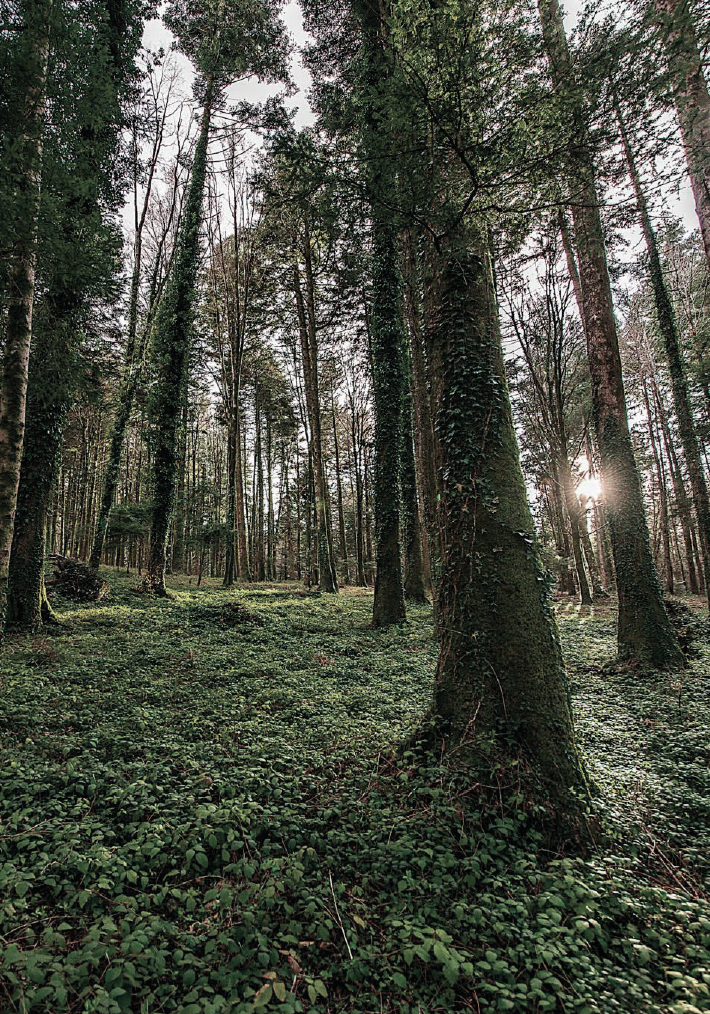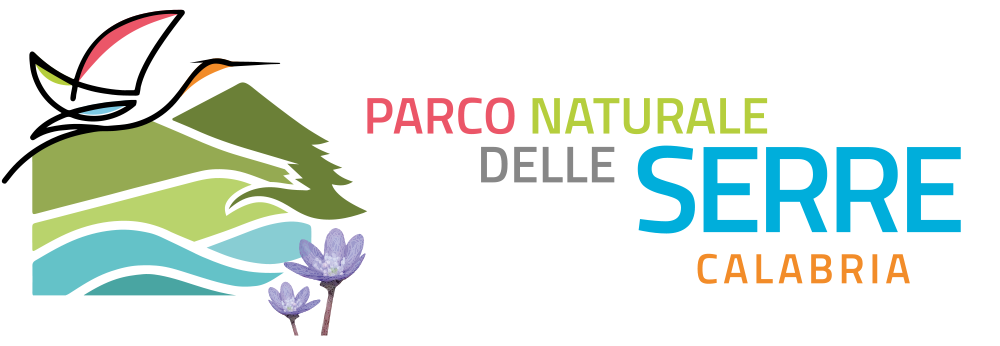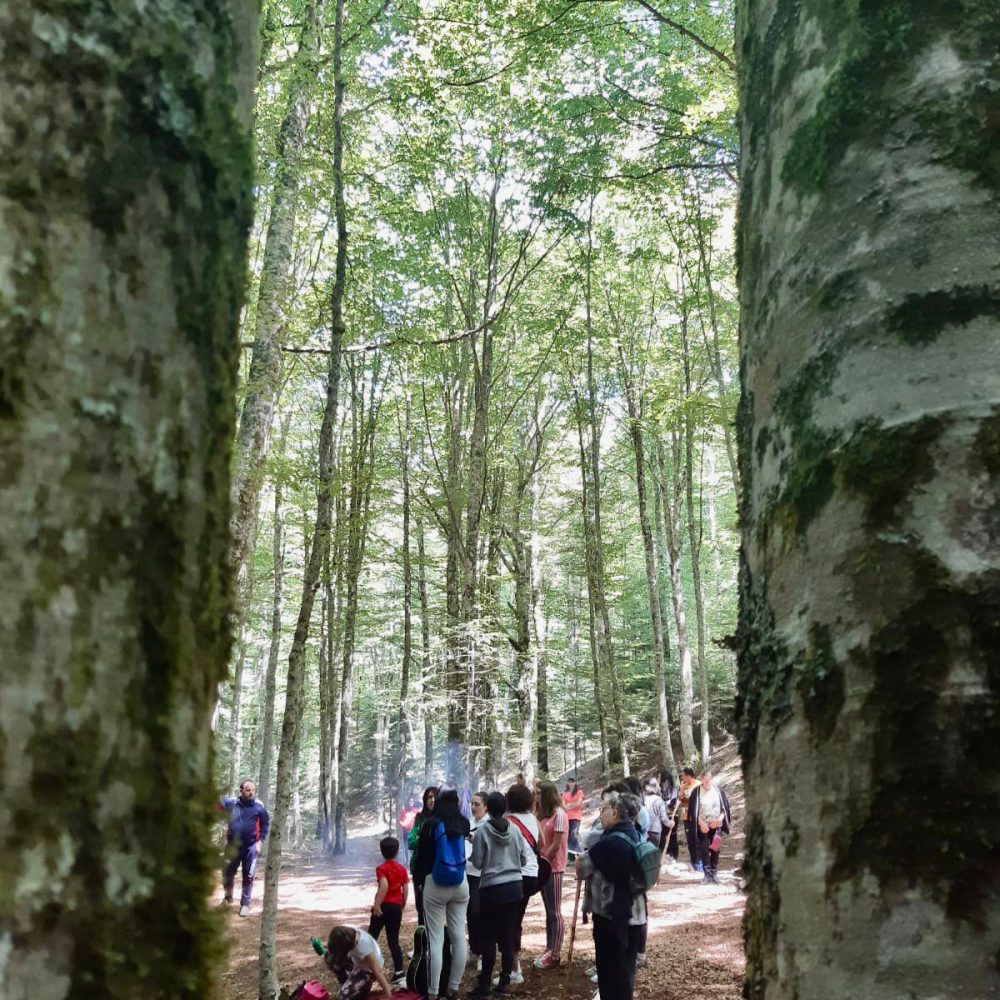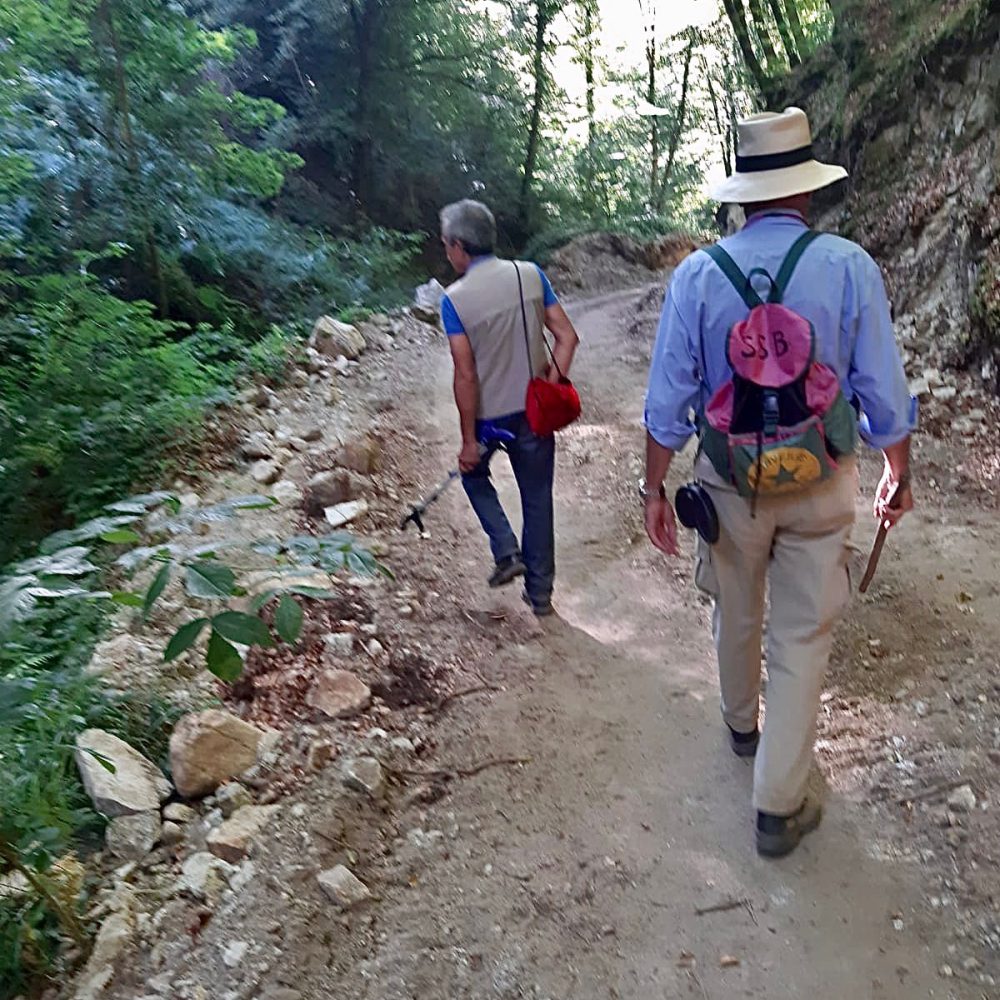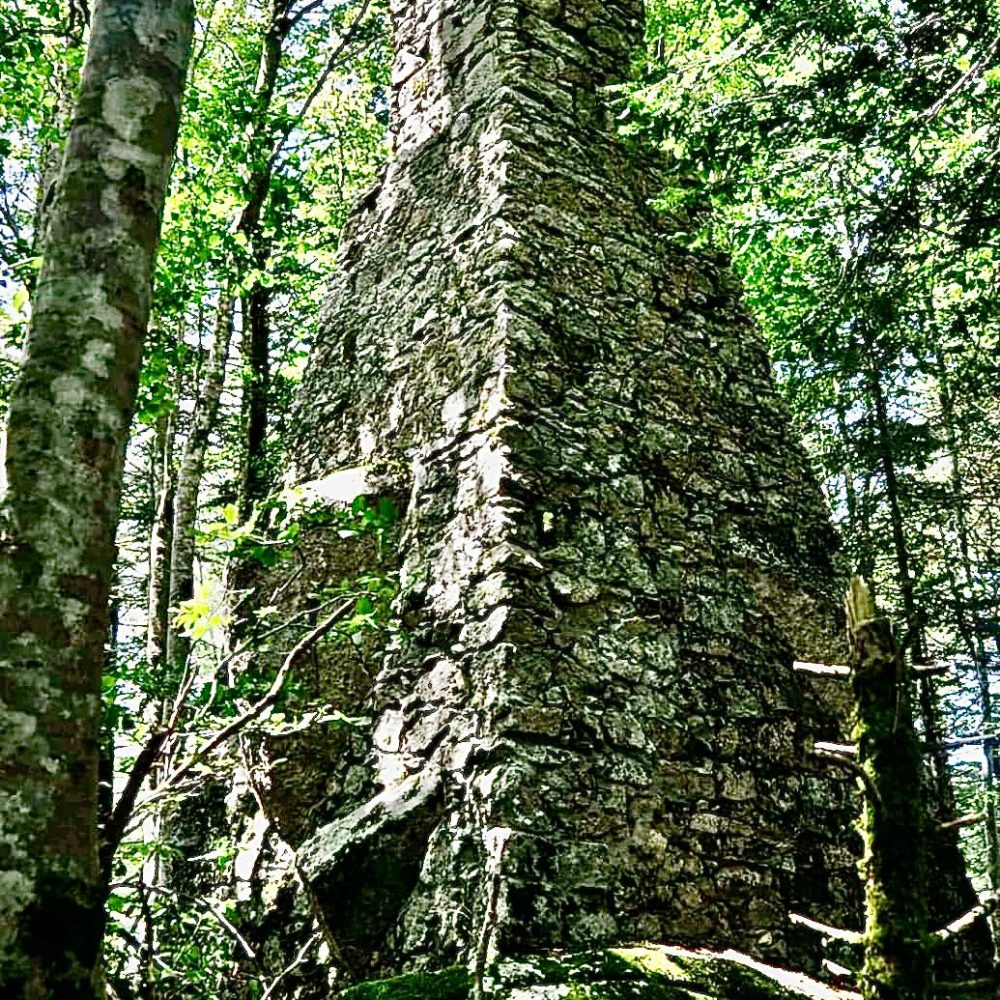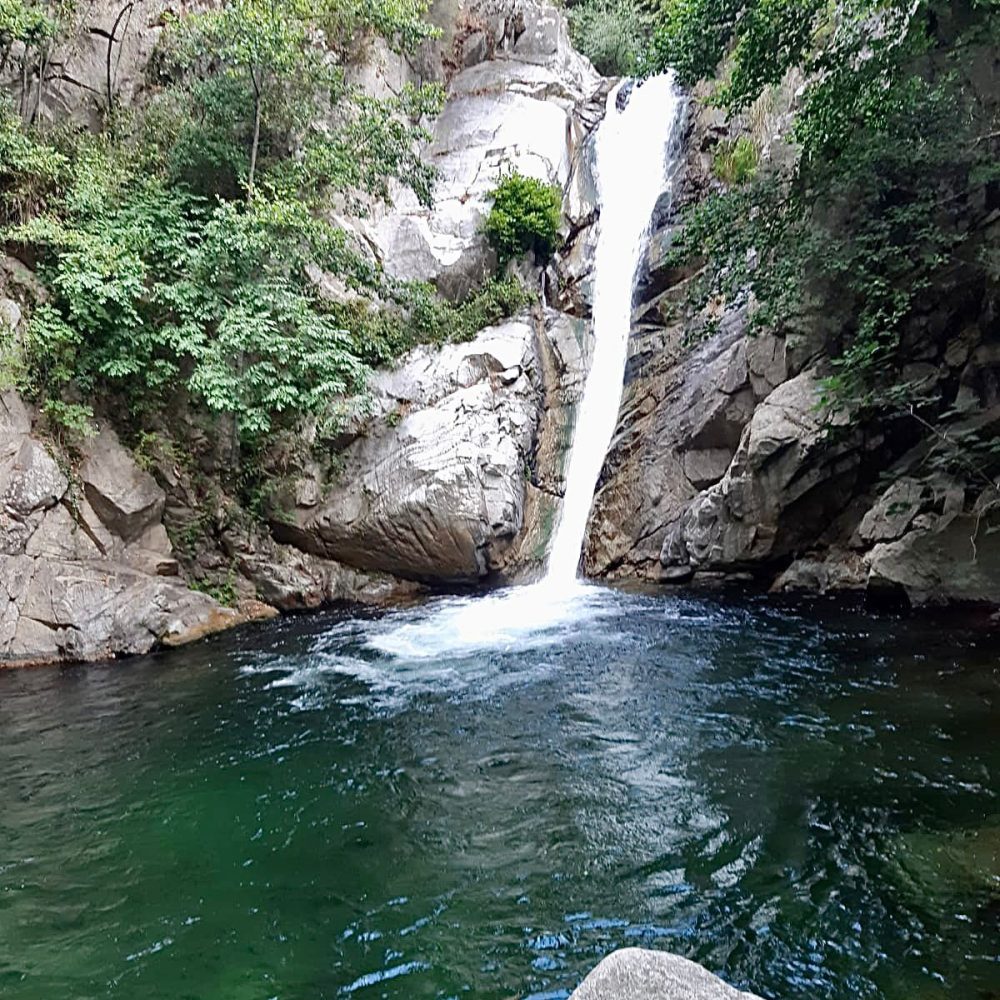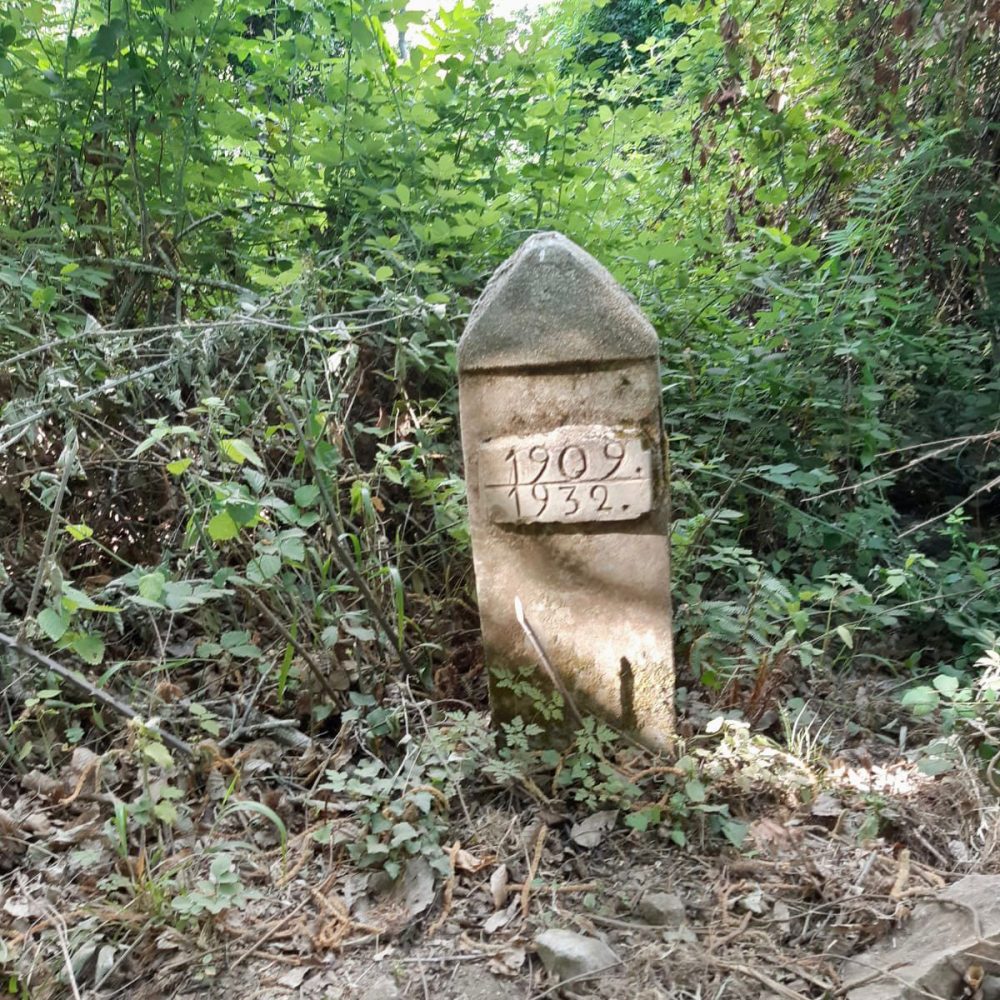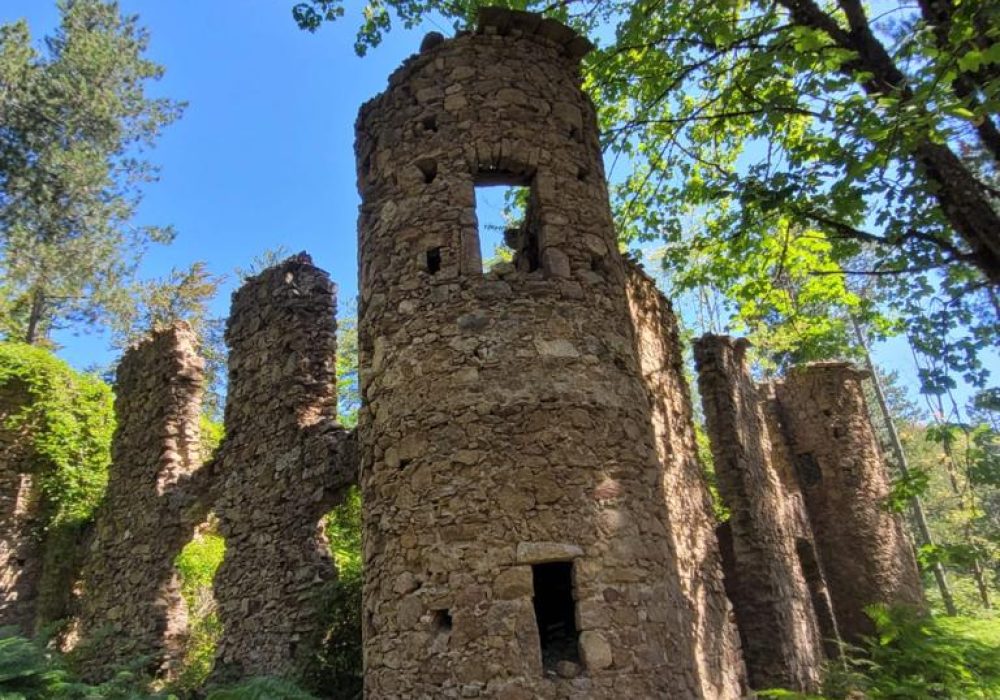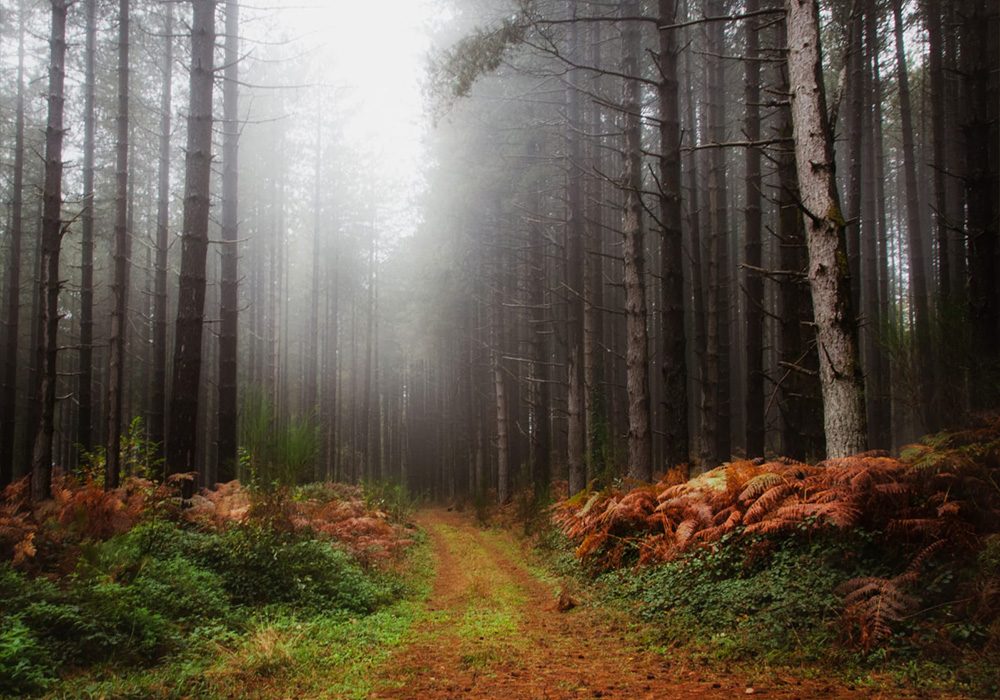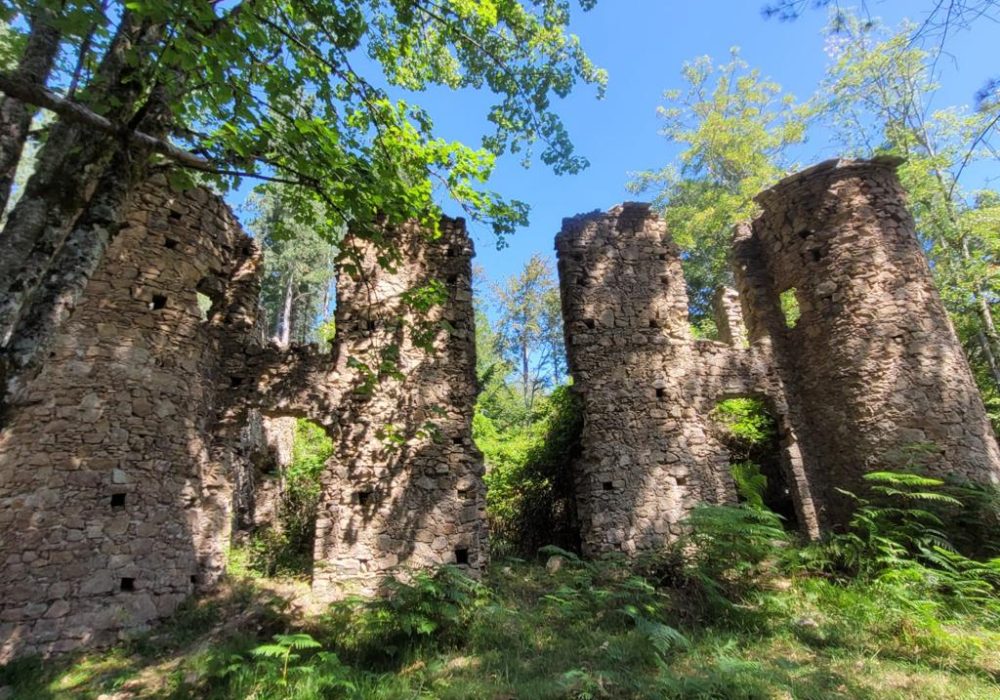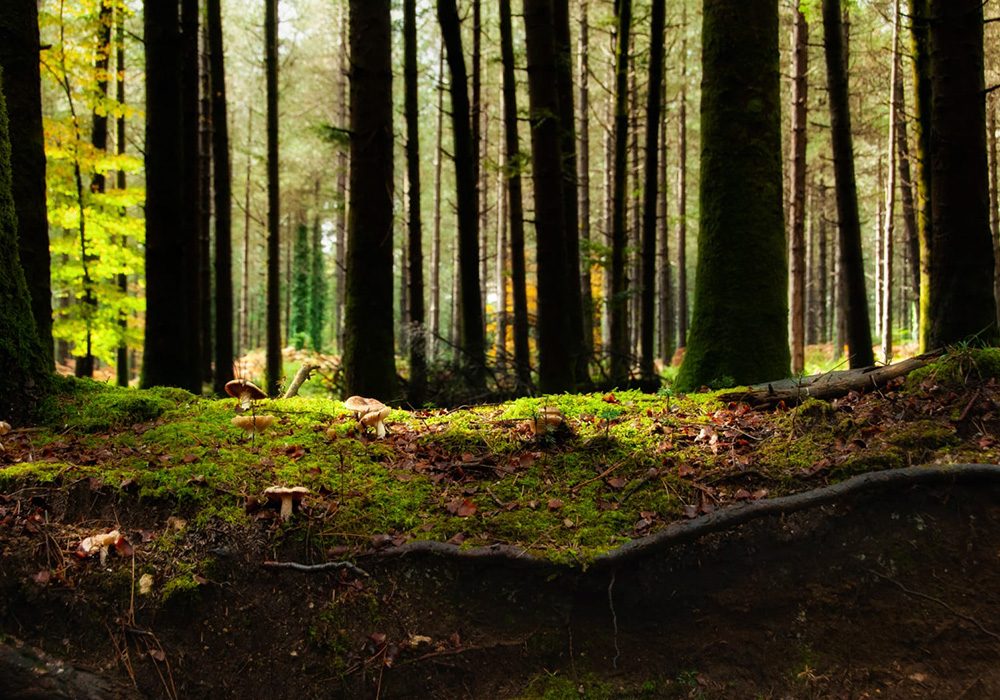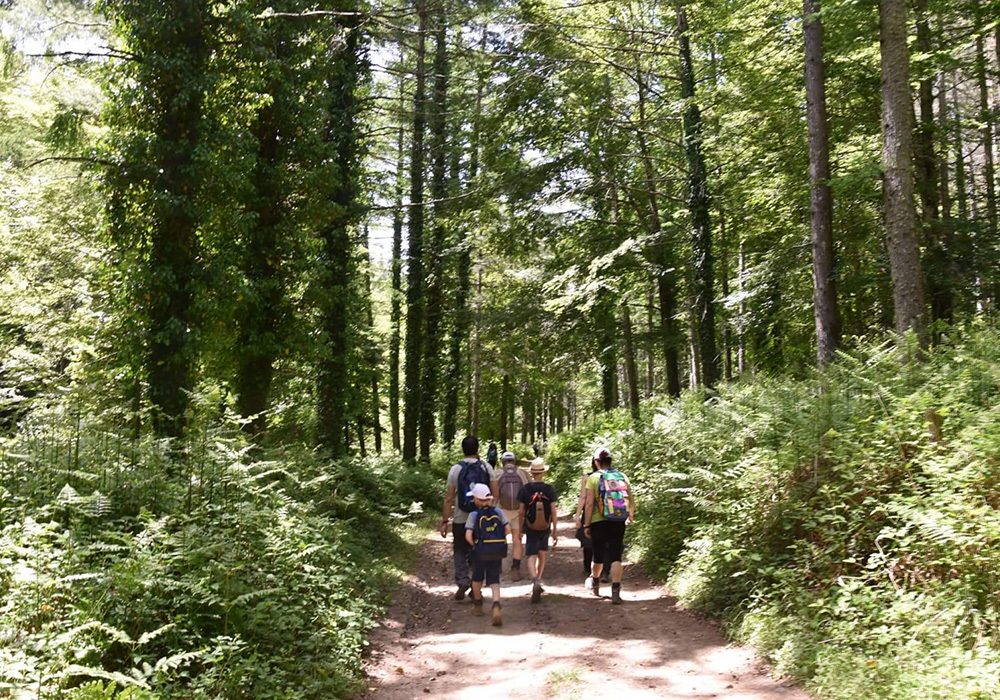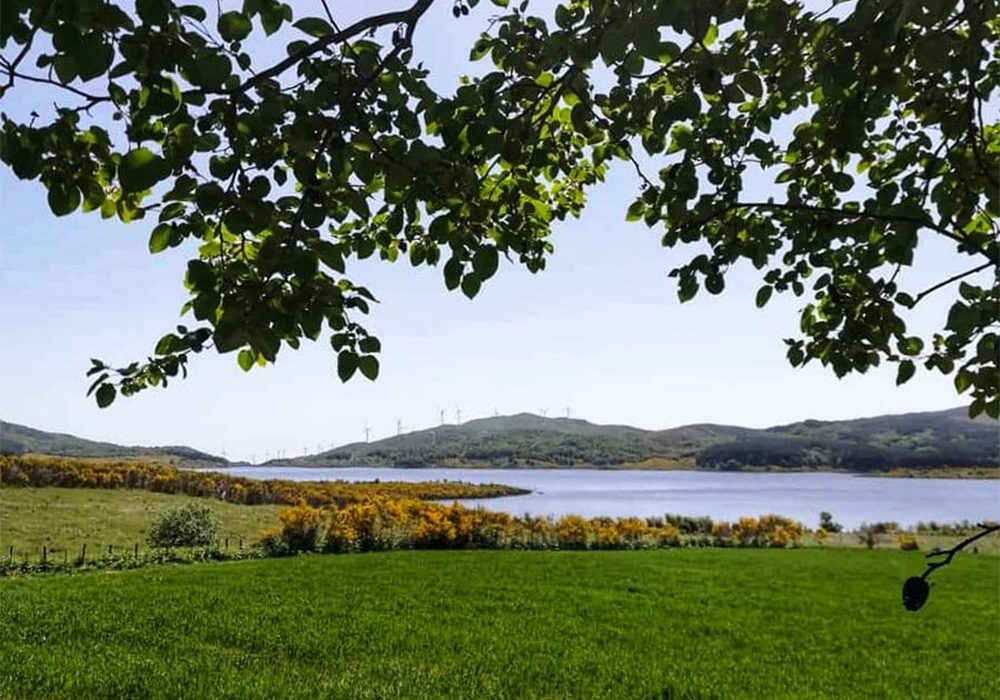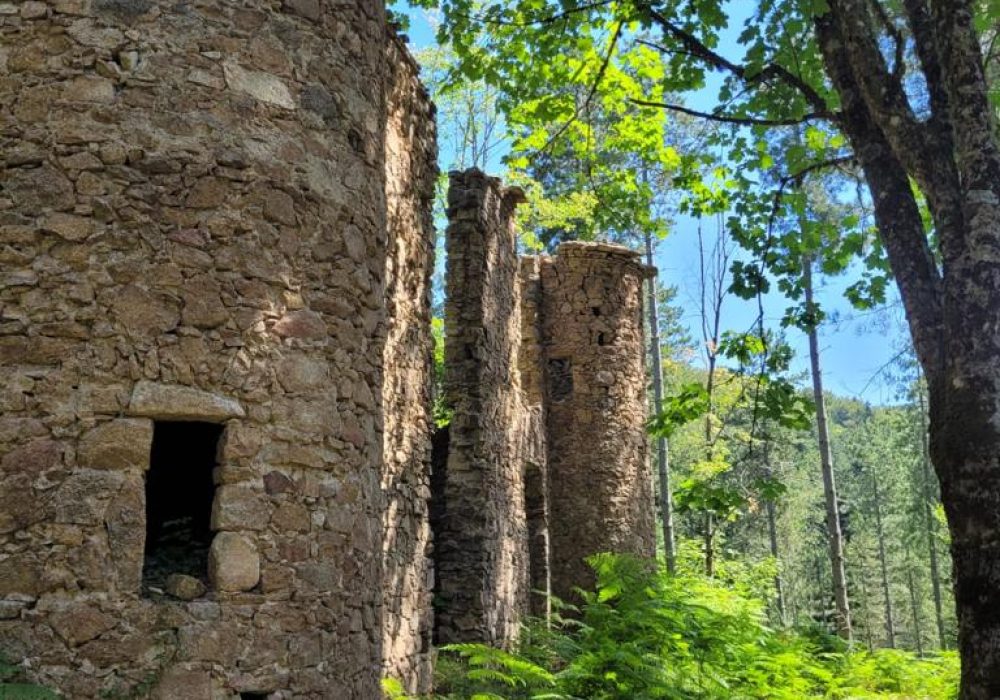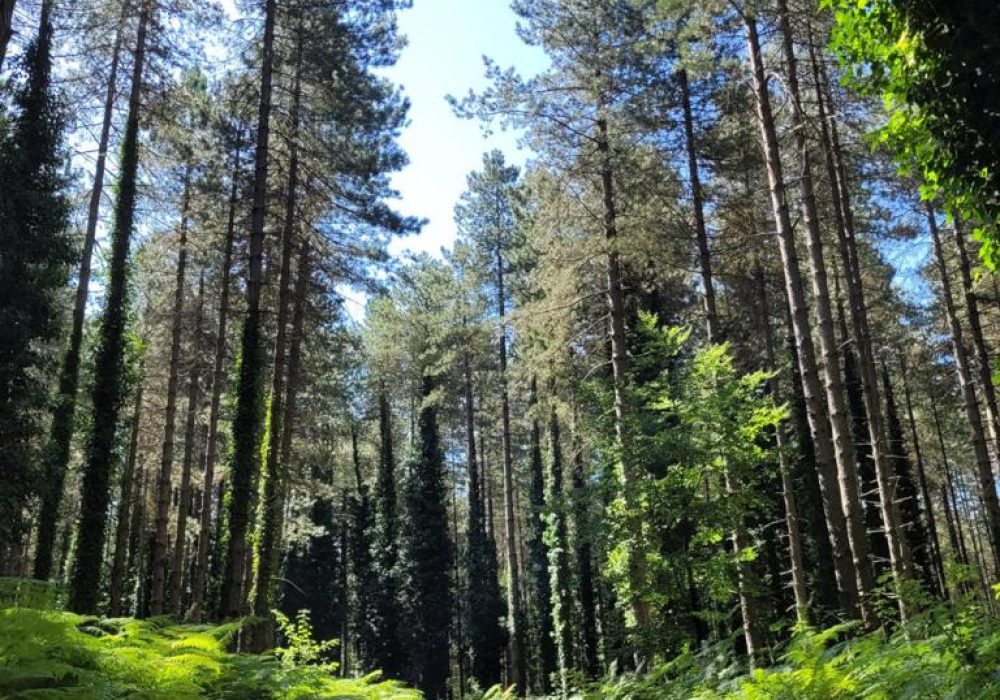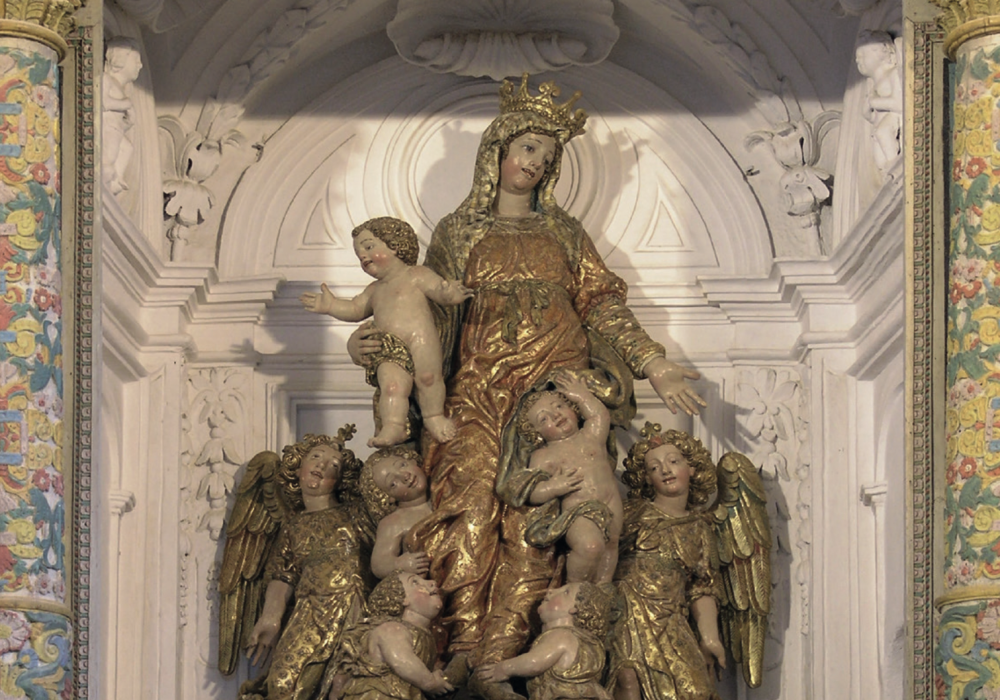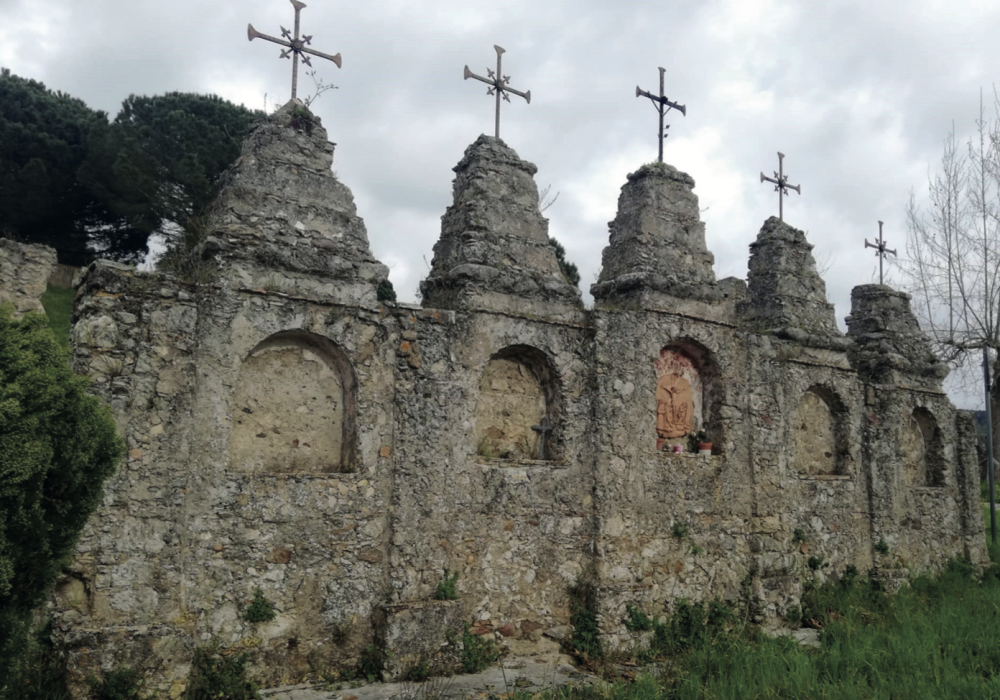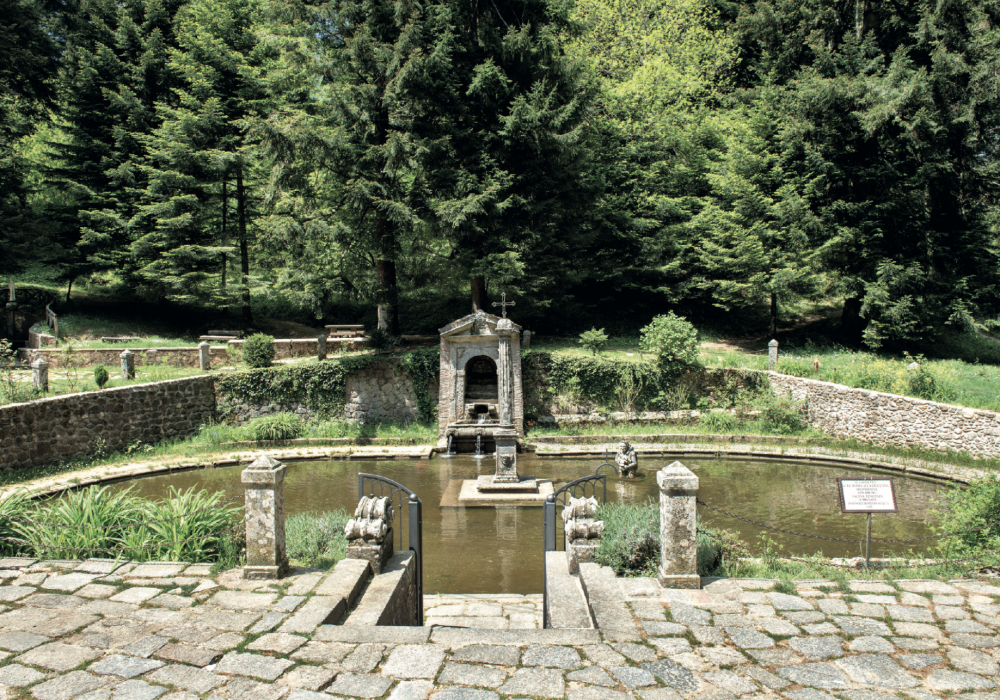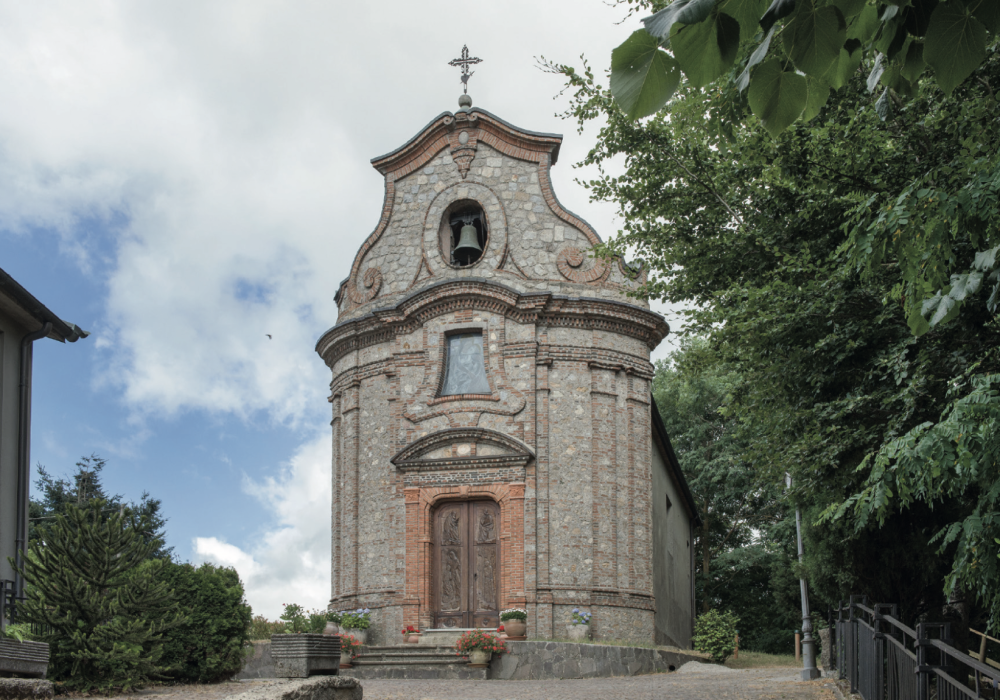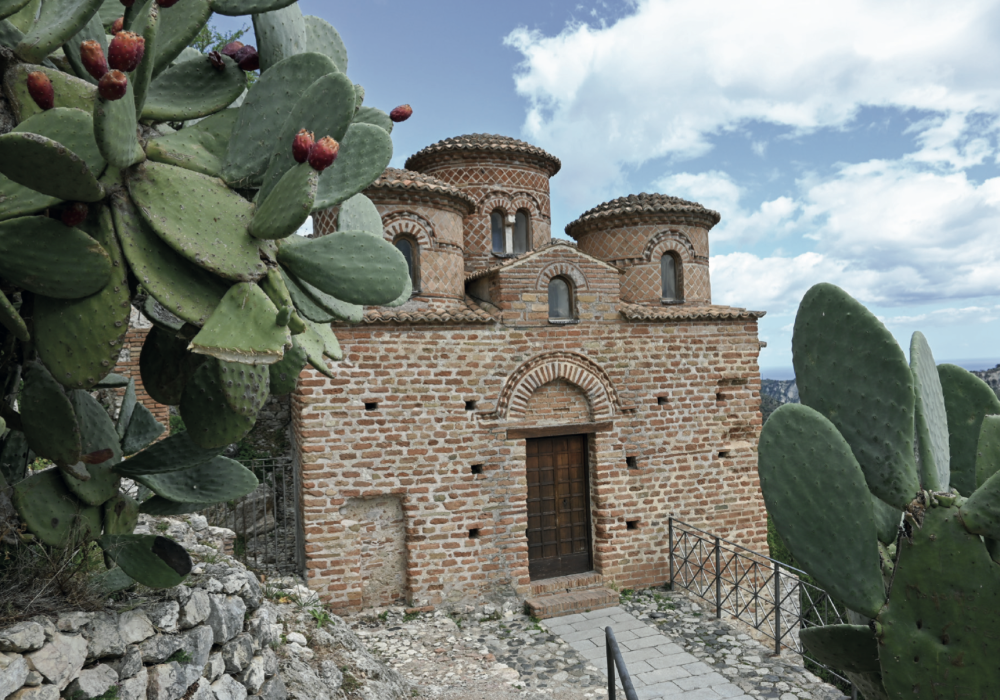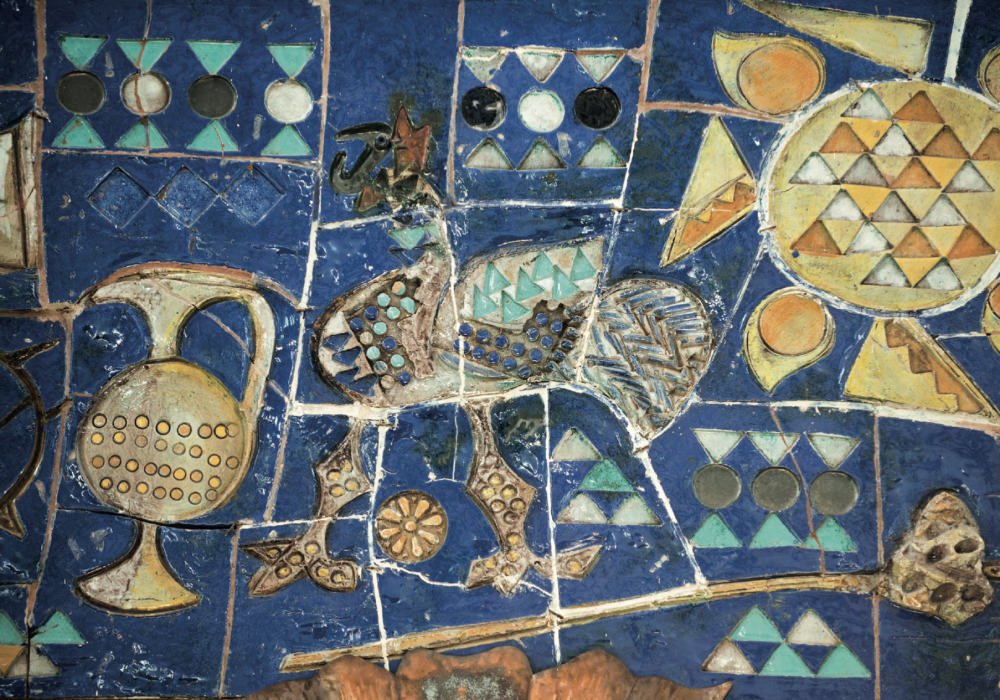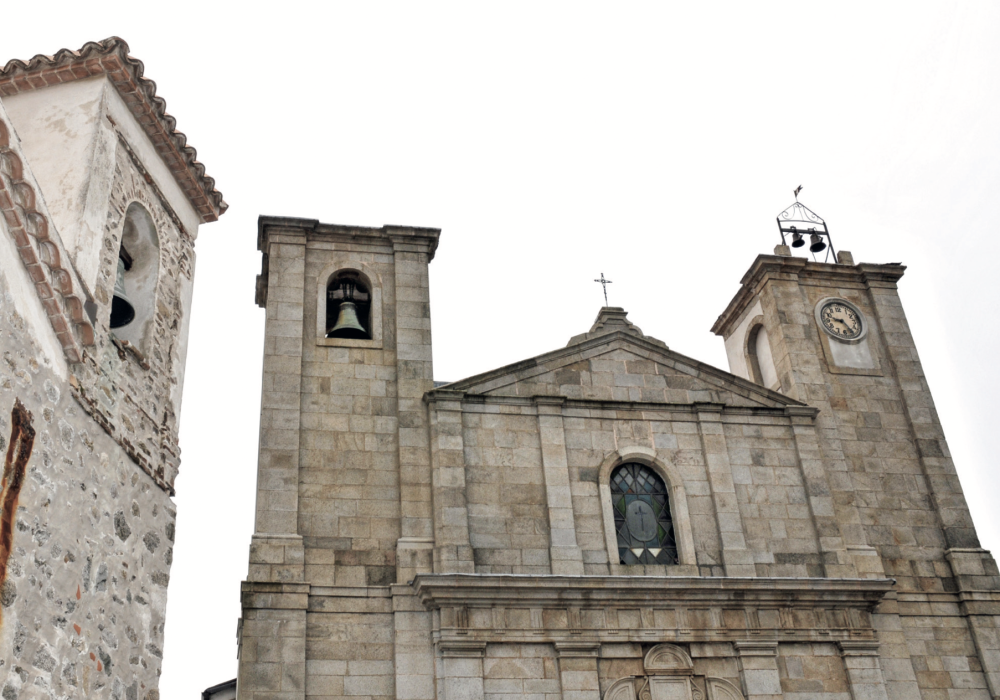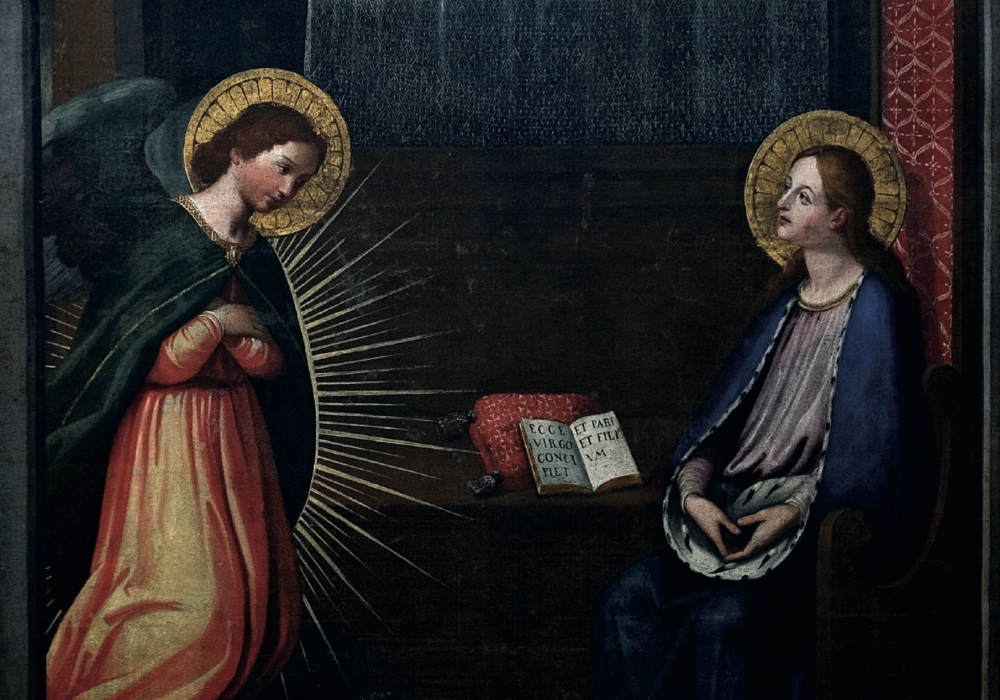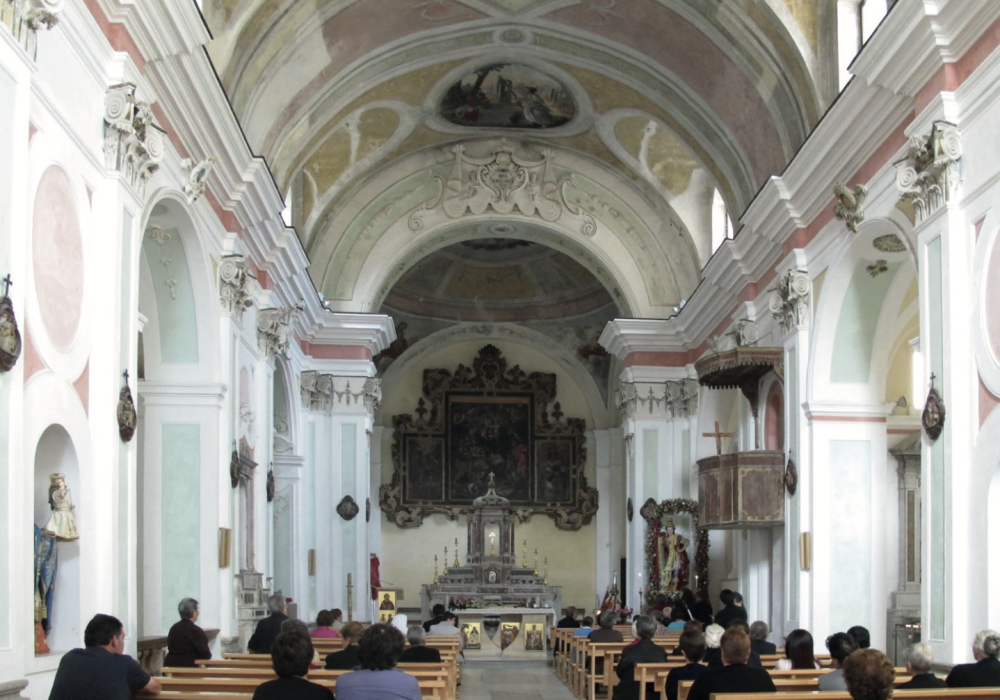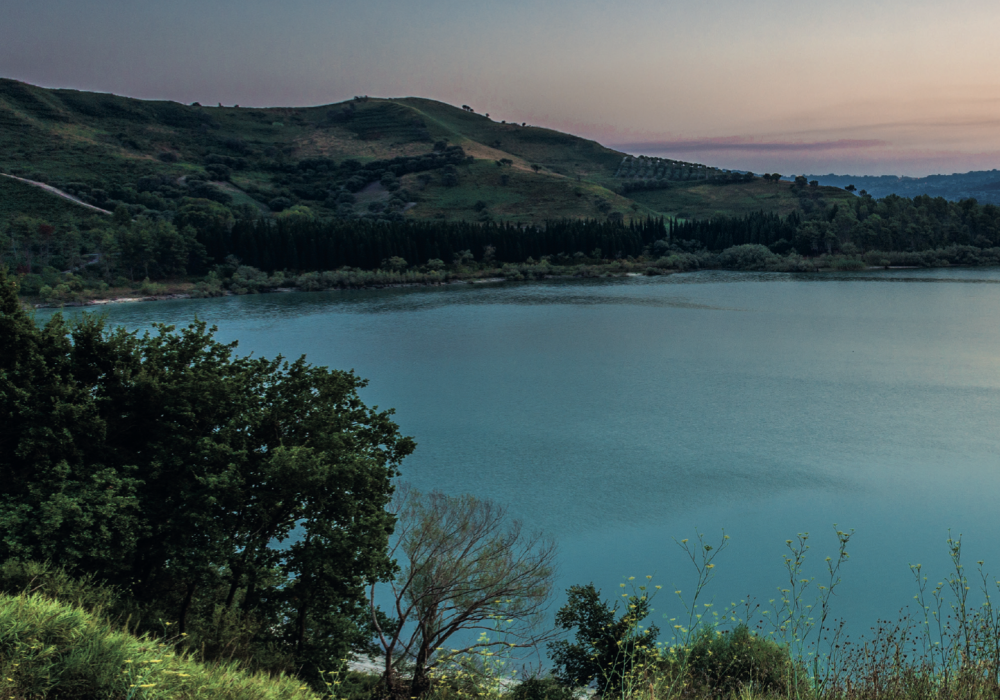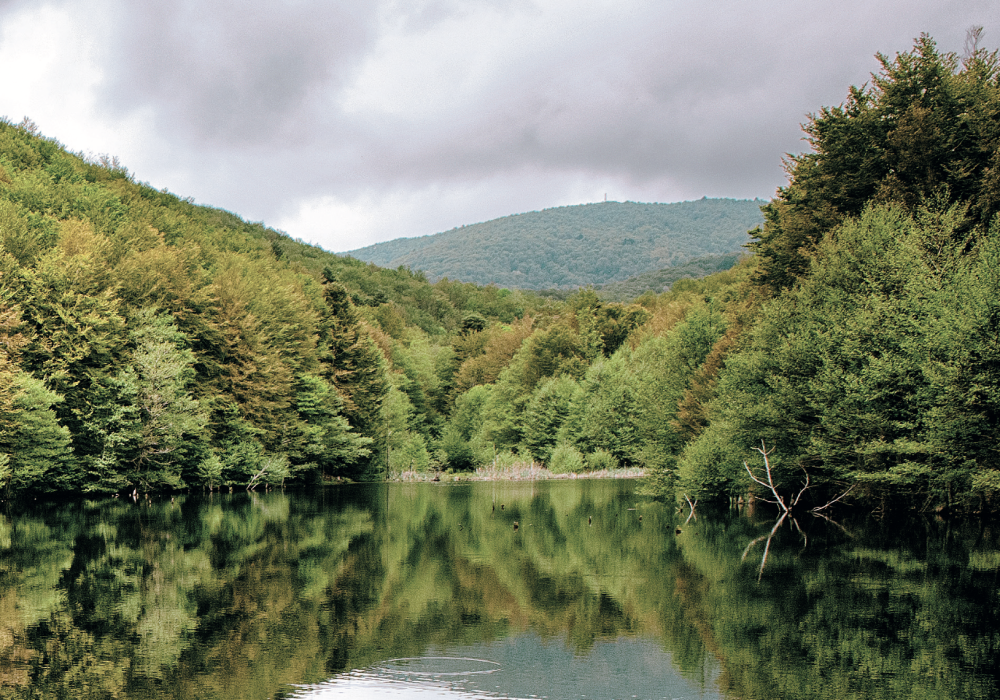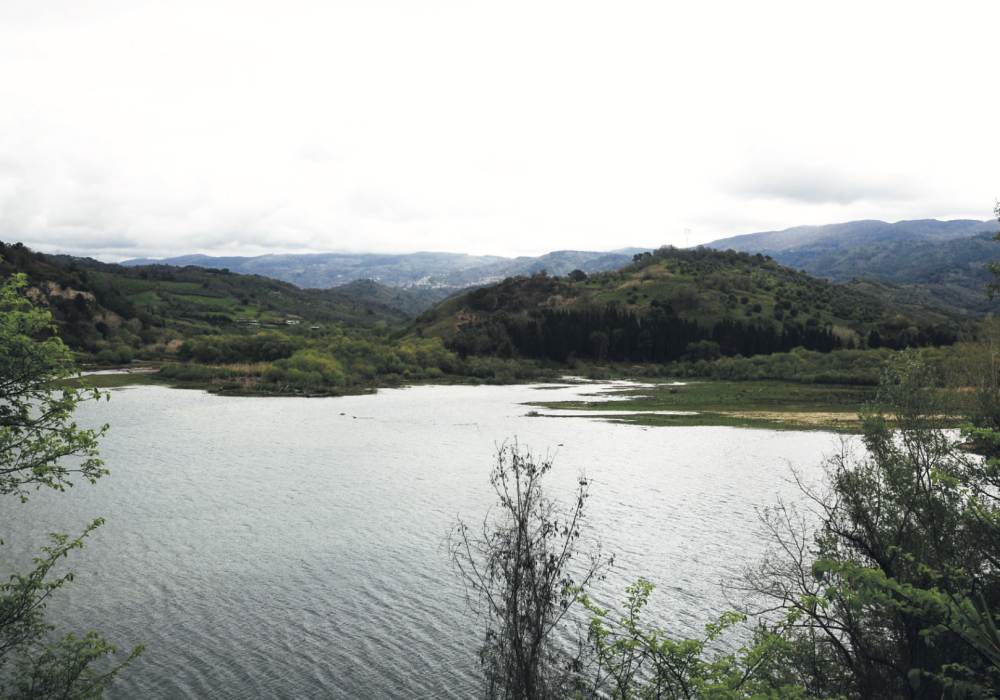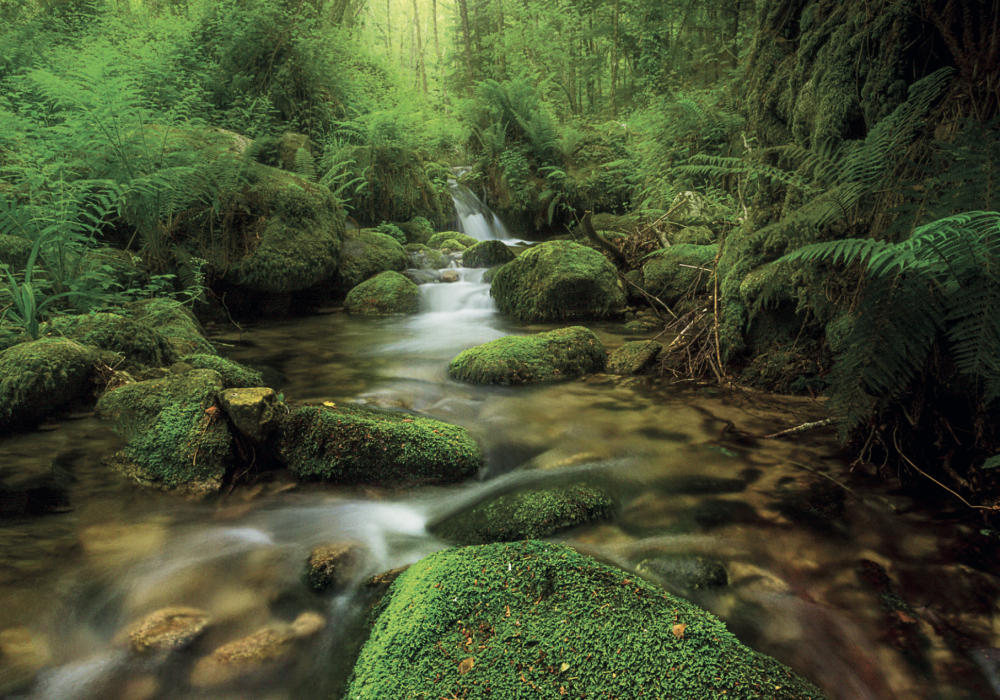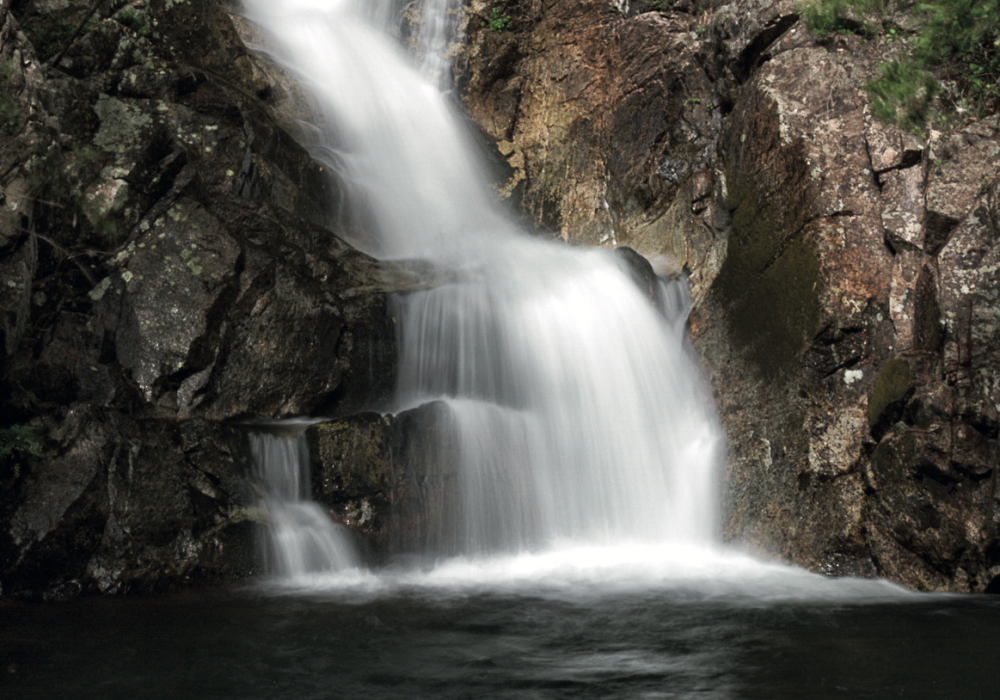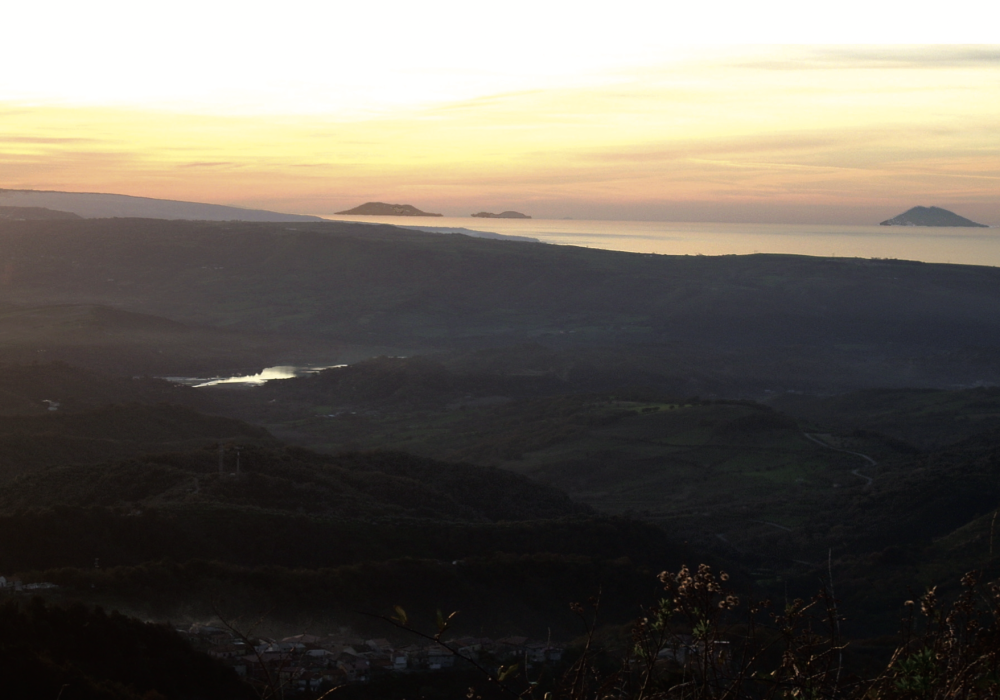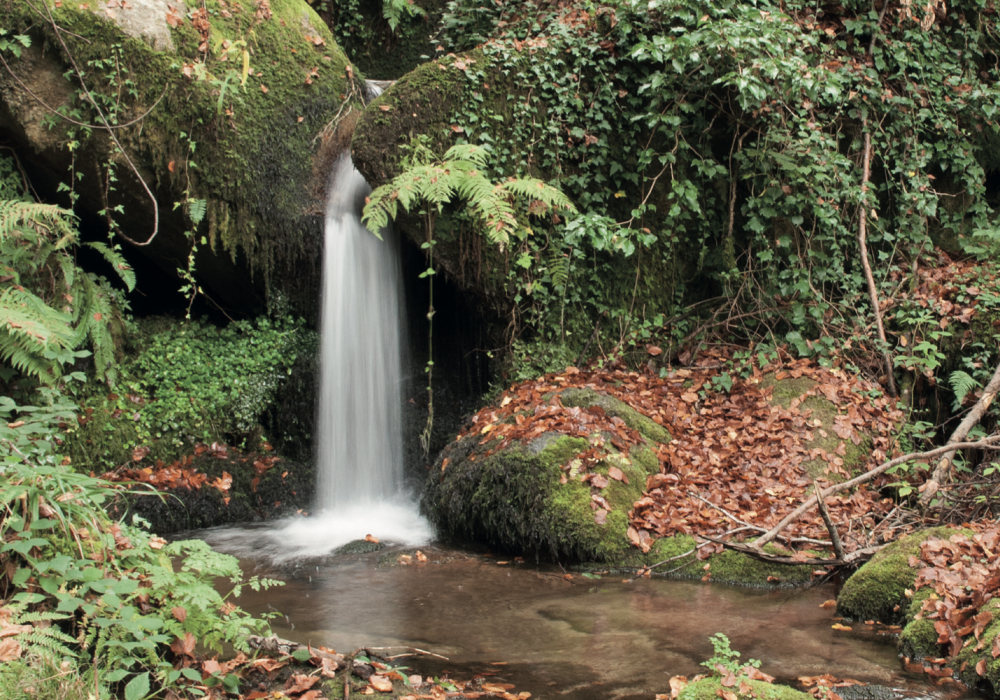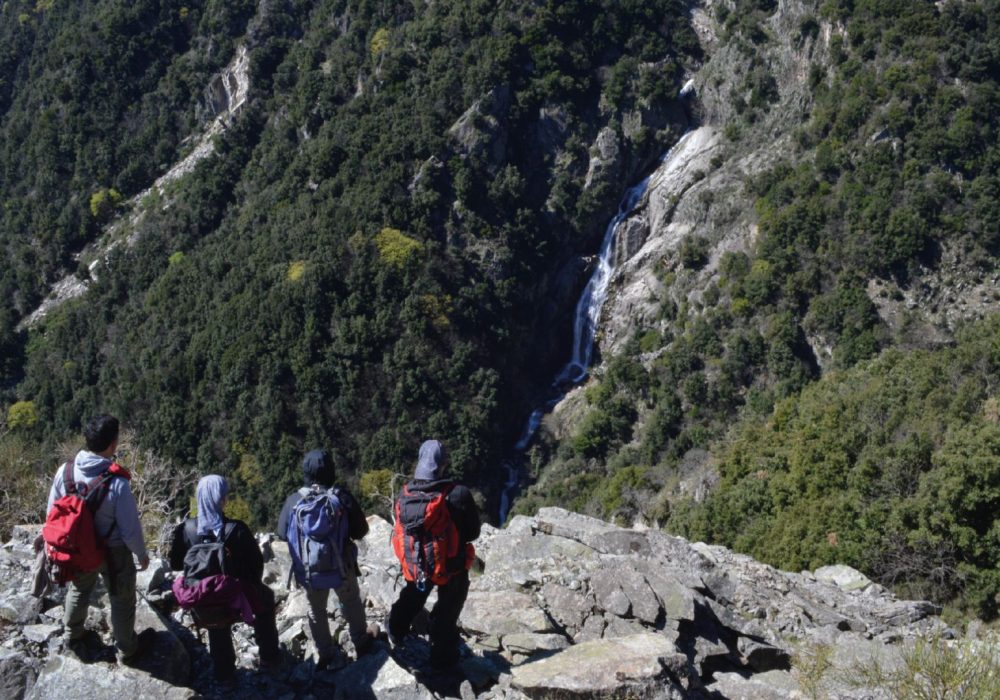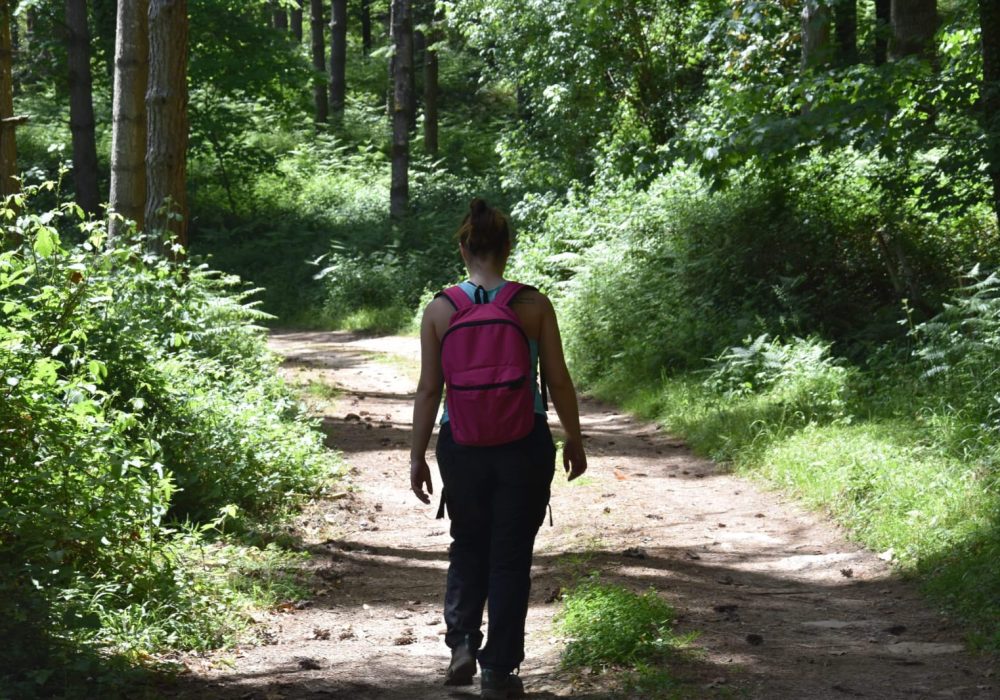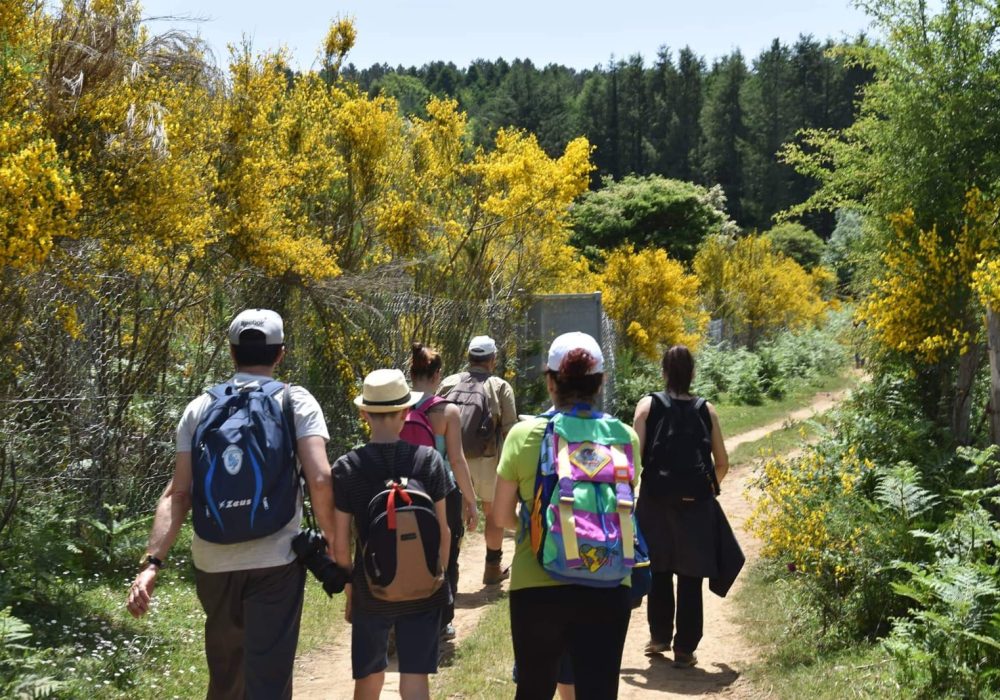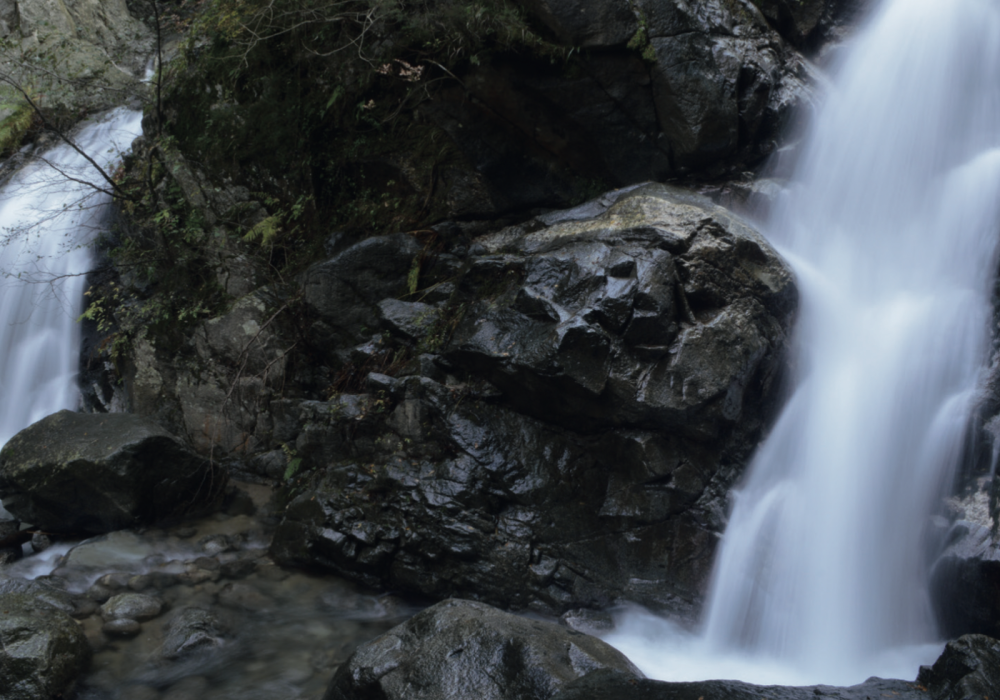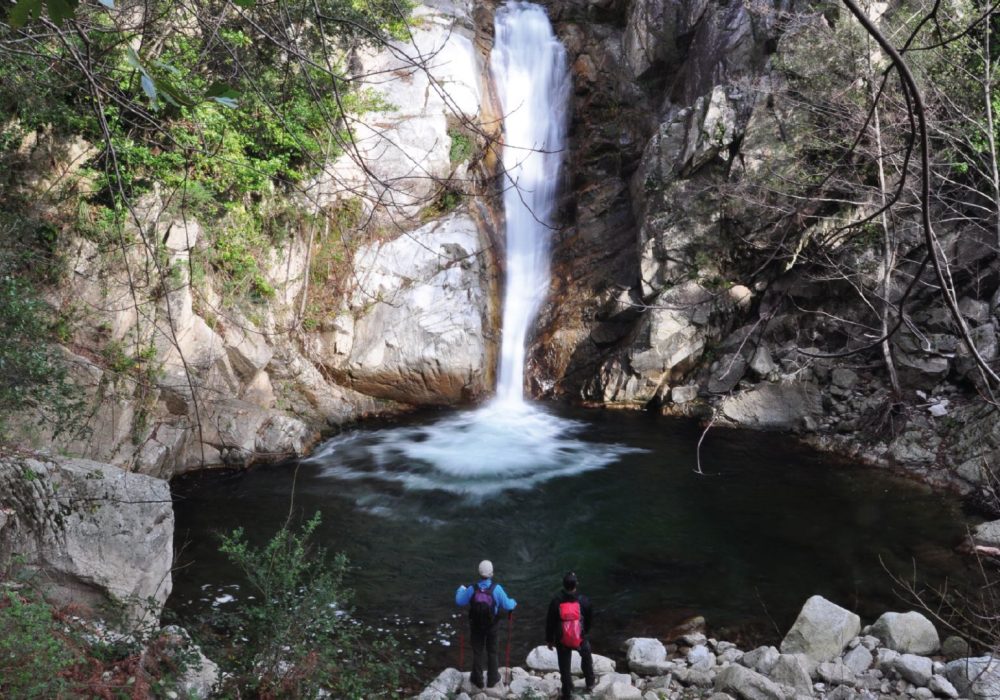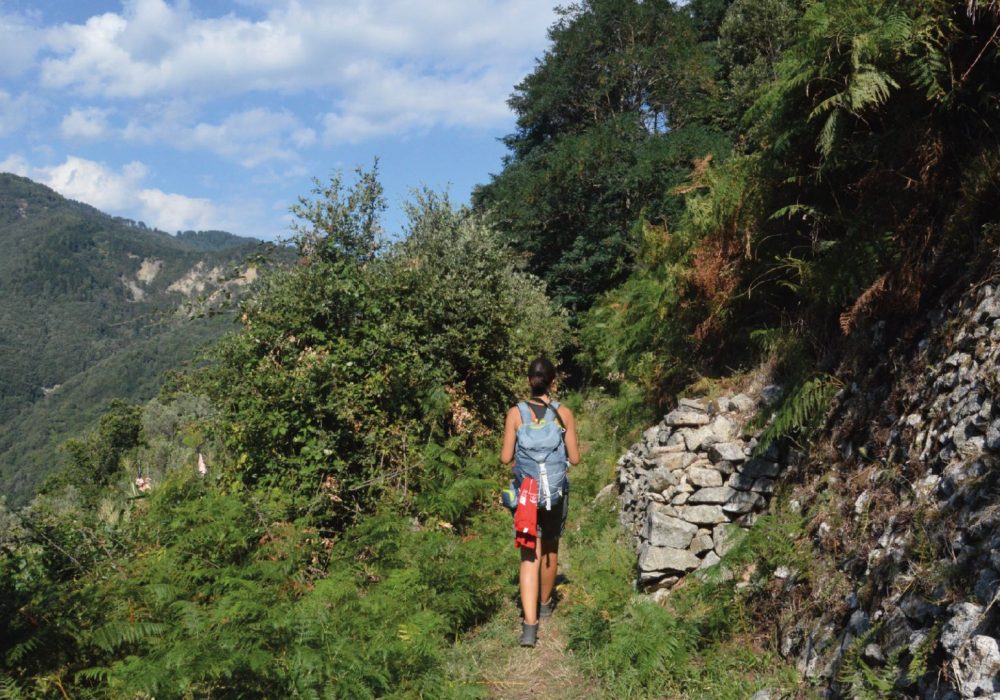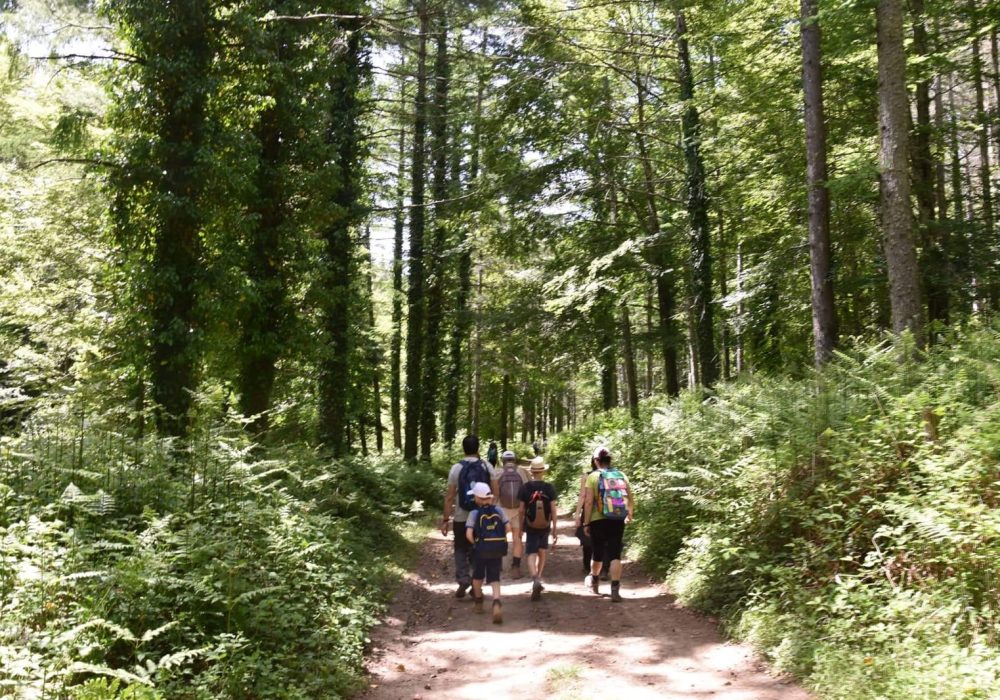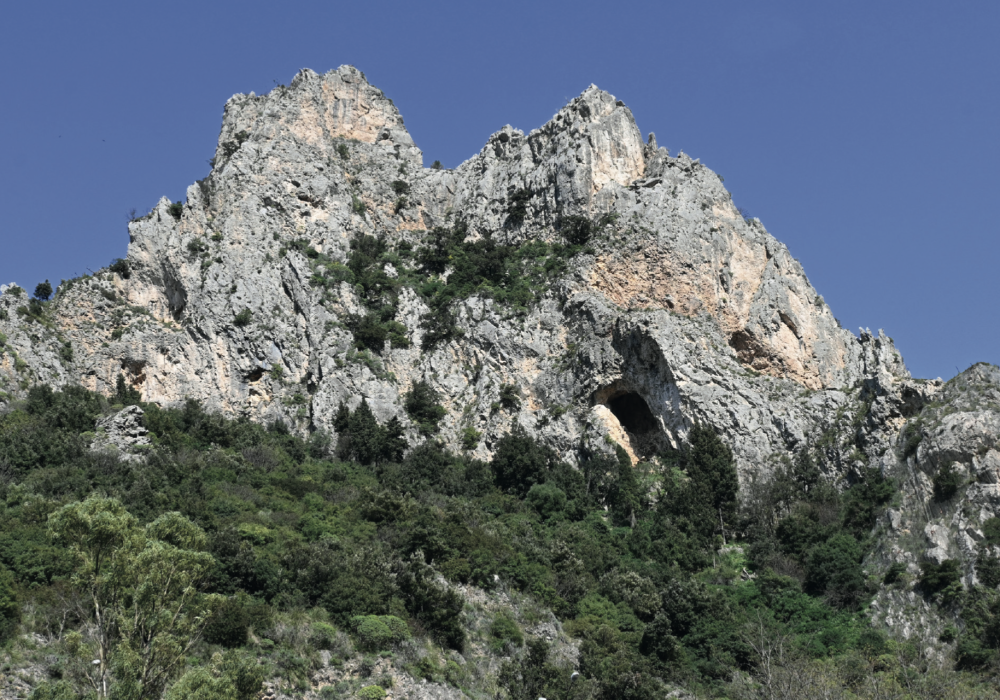King's Beech-Passo Abate Trail
Let us immerse ourselves in the green heart of the Serre. The woods of Faggio del Re with the coolness of the tall trees and streams will welcome us as the path will lead us to the waters of a hilly pond set in the nature oasis of Passo dell’Abate.
Path Info
MUNICIPALITIES: Fabrizia (VV)
START: Faggio del Re SP 9, Fabrizia (VV)
END: Faggio del Re SP 9, Fabrizia (VV)
TIME: 5 hours
DISTANCE: 14 Km
DIFFERENCE IN ALTITUDE: 314 m
MAXIMUM QUOTE: 1.269 m
MINIMUM QUOTE: 955 m
DIFFICULTY: medium
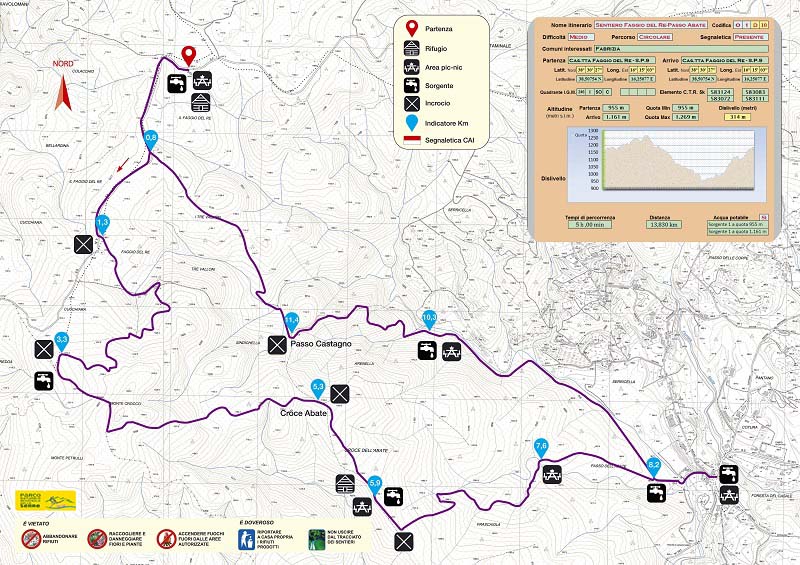
Description
An itinerary immersed in the heart of the Serre that will not fail to satisfy nature lovers.
To reach Faggio del Re, from the A2 SA/RC motorway, take the exit for Vazzano and head towards Serra San Bruno and Mongiana. Once we reach the mountain, we continue towards the Marchesale Biogenetic Reserve (we will find signs along the road). Once past the Monte Crocco pass, we find ourselves on the SP 9 road to Laureana di Borrello. We will find a fence on the left-hand side of the road that encloses a picnic area and a small forestry barracks, along with the ruins of another on the right. We leave the car. We begin the walk by following the SP 9 road towards Laureana di Borrello; after about 20 minutes, a dirt road comes off to the right, just before the “castano” reservoir managed by the municipality of Fabrizia; we take it. A downhill stretch begins, which, in a few minutes, will take us to a depression characterised by the presence of a reservoir on the right. A short uphill stretch follows. We reach a small clearing, there are the remains of a hut on the left, we stay on the road and take the hairpin bend to the right. We continue keeping to the right. The road alternates between short uphill stretches and flat ones. After about 10 minutes we come across two more reservoirs on the right. We will now find ourselves at a crossroads. We leave the small road on the left going downhill and take the central one going uphill, which in a few minutes will take us to a new fork characterised by the presence of a small granite rock on the right. We turn left and then, at the next fork, right again.
From this point, in about 10 minutes, we reach the “acqua fridda” crossroads, where we can quench our thirst at a fountain that runs below, in a hollow in relation to the road. From the trivio we continue to the left and, in a few minutes, we will come to another crossroads: we are on the summit of Monte Crocco. The place is marked by signs. We turn left and at the next crossroads turn right, following the road downhill. A small clearing opens up in front of us, with a large beech tree on the left and a road closed off by a bar. We take this road and continue downhill until we reach a new fork where we leave the main road to follow a small road on the right that will take us to the Croce dell’Abate crossroads, recognisable precisely by the presence of a cross and the signs indicating the location and the start of “route 1”. From here on, we follow the yellow signs that will take us about an hour to admire the Passo dell’Abate nature reserve. For the return journey, simply take the yellow signs again, again “route 1”, which, starting from the entrance to the oasis (first crossroads on the right) and skirting the Castano torrent, lead to the crossroads of the same name. We turn right and now follow the CAI signs that will take us back to SP 9 and Faggio del Re.
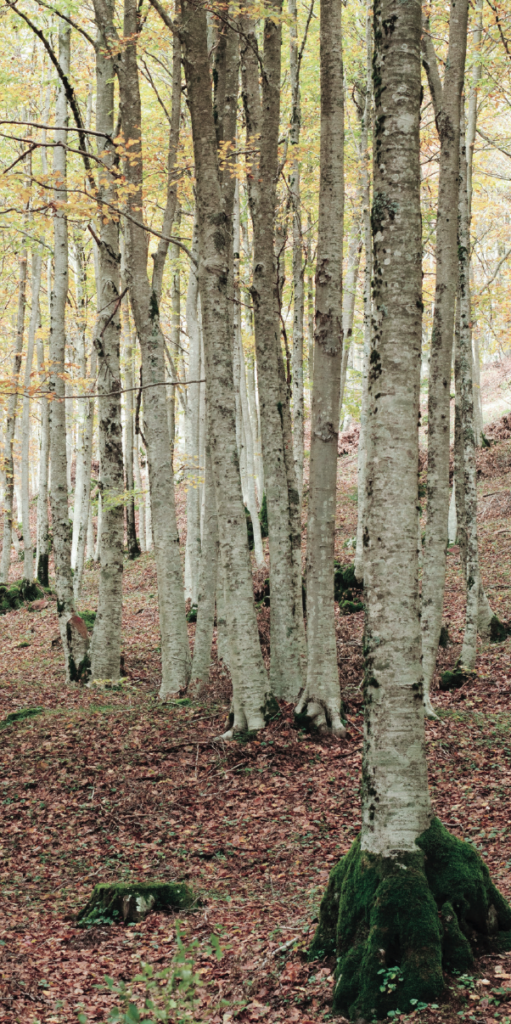
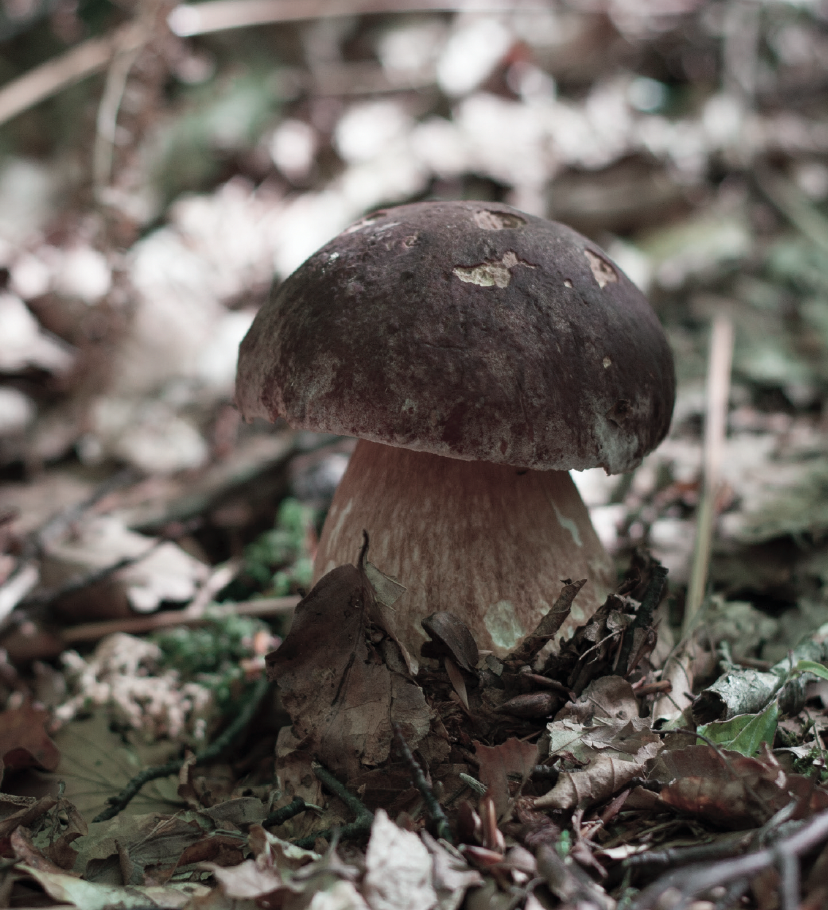
SCHISTS
Along the route, we will find rocks, sometimes simple chips, pearly white that flake easily due to the particular arrangement in parallel planes of the minerals that make them up, which in these areas are cyanite and talc.
Schists are particularly abundant in Calabria as well as in Sardinia and the Alps, evidence of the convulsive geological past of this land.
'PORCINO'
When one speaks of the Serre, the association of gourmets immediately goes to mushrooms, and among these the best known and most appreciated is certainly the porcino. The ancient Romans called this species Suillus because of its generally stocky and massive appearance, and the term porcino is the exact translation.
They are symbiont, gregarious mushrooms that can grow in groups of many. A product of great culinary value, fresh, dried or preserved in oil, it is the basis of many dishes and preparations that enrich the local cuisine.
FARIOUS TROUT
If we pause to admire the pond, we will notice sudden ripples on the surface, silvery flashes. This is the brown trout engaged in hunting. Its sprinting speed is around 40 km/h, which enables it to catch even fast prey on the edge of the current. It is a widespread species as a result of repopulation carried out at the expense of the native central-southern species: the Sardinian trout. It inhabits the fast-flowing, cold and clear waters of mountain or high hill streams.
FIR-TREE
The Calabrian silver fir is one of the most valuable ecotypes in Europe in terms of morphology, growth rates and, above all, its proven resistance to various adversities, including acid rain.
The regional government owns specimens of great naturalistic value in the Passo dell’Abate area.
ABBOT'S PASS
In ‘contrada Serricella’, a few kilometres from the town of Fabrizia, we find a beautiful natural oasis. Picnic area, fountains and a small lake in whose waters the colours of the surrounding woods are reflected. Here we can stop, rest and enjoy the beauty of the place.
